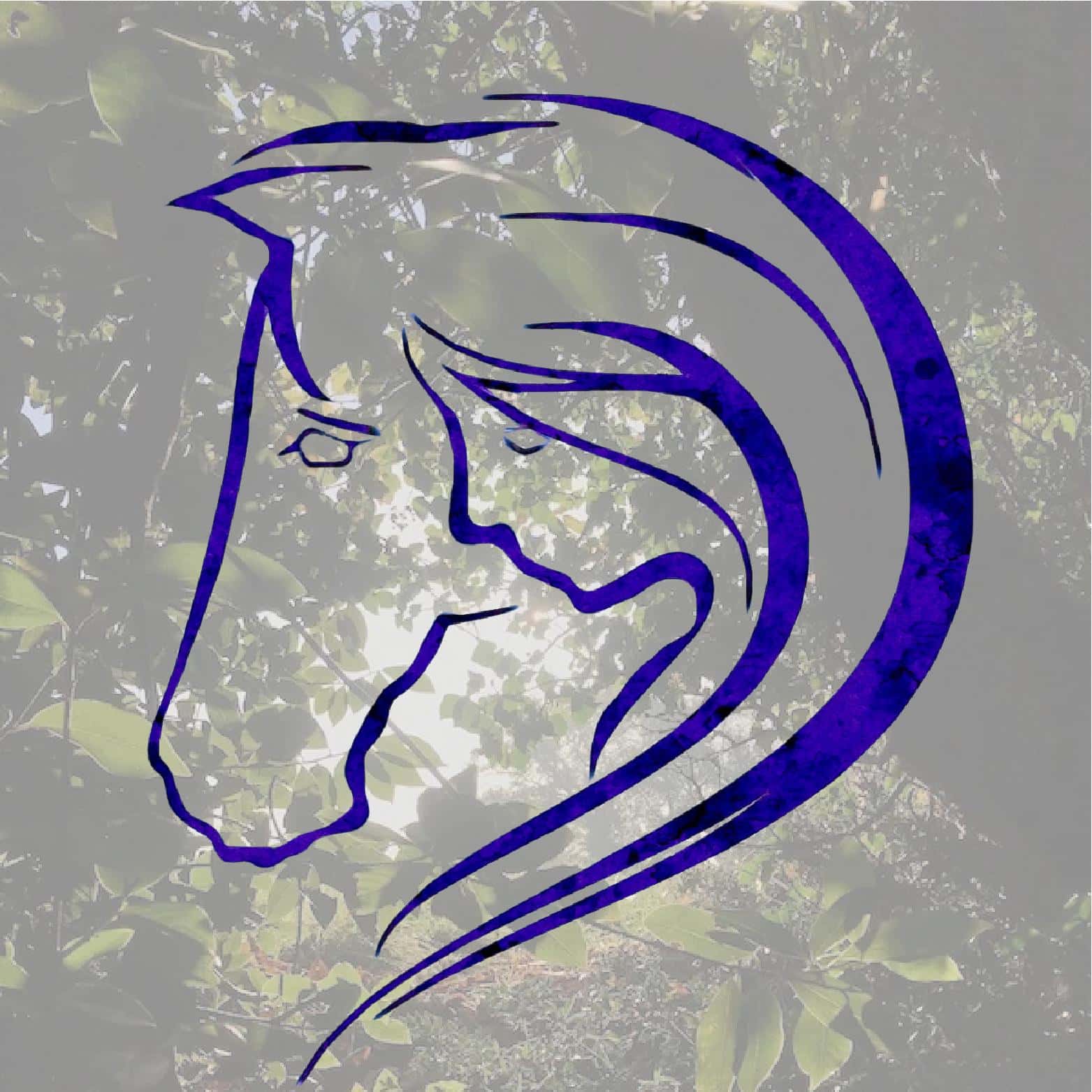The Emotional Process
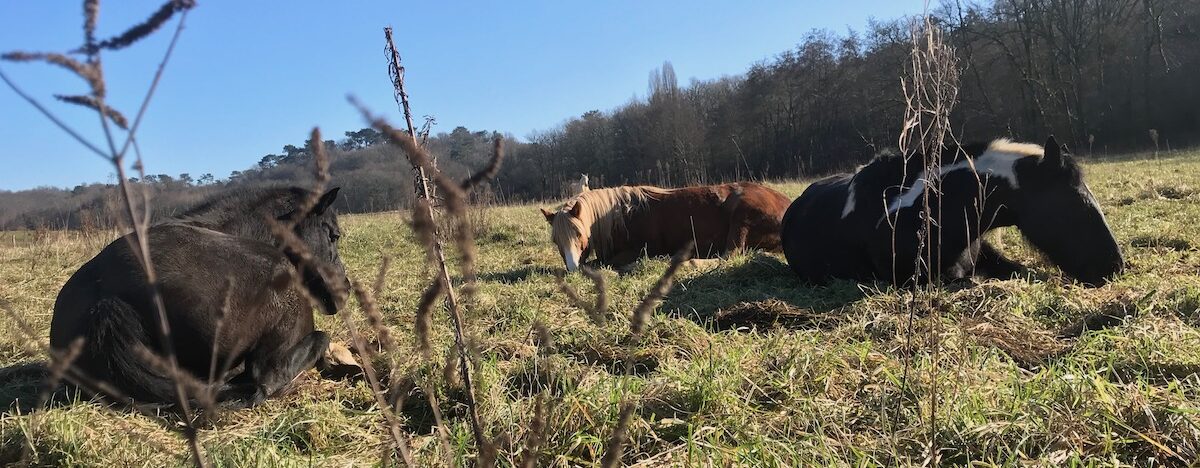
Rehabilitating my horses to go rug free was the hardest decision I have made in my holistic journey. This was because it brought up my own insecurities about caring for the horses. I wanted to be sure they were okay, and I thought that tucking them up in their rugs was the answer.
Why I Decided to Go Rug Free
One evening it was so warm we decided to leave the rugs off. A storm came in and brought the temperature down to four or five degrees Celcius overnight. Many of the horses became ill as a result, their kidneys having been chilled. So despite all the years of crazy running around to put rugs on before it rained and taking them off when the sun came out, it only took one miscalculation about the weather for things to go wrong.
The issue was not that we had failed to put on the rugs, but that the rugs had so effectively taken away the horses natural defences. That summer we gave the rugs away to the dog shelters and the horses had time to recover their own resilience. A mixture of exposure and extra nutritional support meant that by the autumn they were growing their coats unhindered as nature intended.
Since the horses went rug free they became stronger every year. The year before we arrived in our present home, my herd had no man-made shelter, and it was one of the coldest winters on record in the area. Remarkably none of the horses shivered or seemed to struggle. They would gallop and play when they needed to warm up, eat more hay or snuggle up together under the hedges.
Understanding Natural Resilience
When you begin to have faith in your horses’ ability to look after themselves, you see their true power and beauty. It does require a gradual shift in perspective. In my case I began to appreciate the shiny, hard look of a healthy coat that is tough in all weather. It is not the same as the soft, polished look of a rugged horse. This begins to feel seem vulnerable and even lifeless over time.
Likewise there is a seeing past mud and somewhat scraggy mains and tails, to see the comfort therein. A horse loves to feel free of restrictive clothing and the vulnerability of a clipped coat. The mud is a protective layer, keeping flies and biting insects at bay. Long manes do the same thing, as well as helping to maintain heat in the winter.
Since my horses went rug free I have often noticed how rugged horses are overheated and uncomfortable. Their energy is heavy and slow, and they seem reluctant to move in comparison to rug free horses. Horses’ natural vitality is easiest to see in wild herds, yet it certainly returns to horses if their environment provides enough stimulus.
What About Thoroughbreds?
It is true that breeding horses over many thousands of years has changed them physically, including their coat. Thoroughbreds and sport horses now have a much finer, thinner coat than the native ponies. It does seem that when a horse is provided with all of the aspects they need in their lives to be healthy, their physiology is able to balance things out.
In my herd, Quaramba, pictured here, who is an Oldenburg mare with a relatively short, fine coat, is one of the toughest horses in the herd. Even though she doesn’t carry a lot of weight or have a long coat, she rarely shows any signs of being cold. She was rugged as a yearling and then allowed to readjust rug free.
One of the OTTB (Off The Track Thoroughbreds) Odette, I helped to rehabilitate with my sister went through an incredible process of re-empowerment over several years. Her wellbeing has continued to improve over more recent years, with age and experience she has become one of the herd matriarchs, and her winter coat is still magnificent.
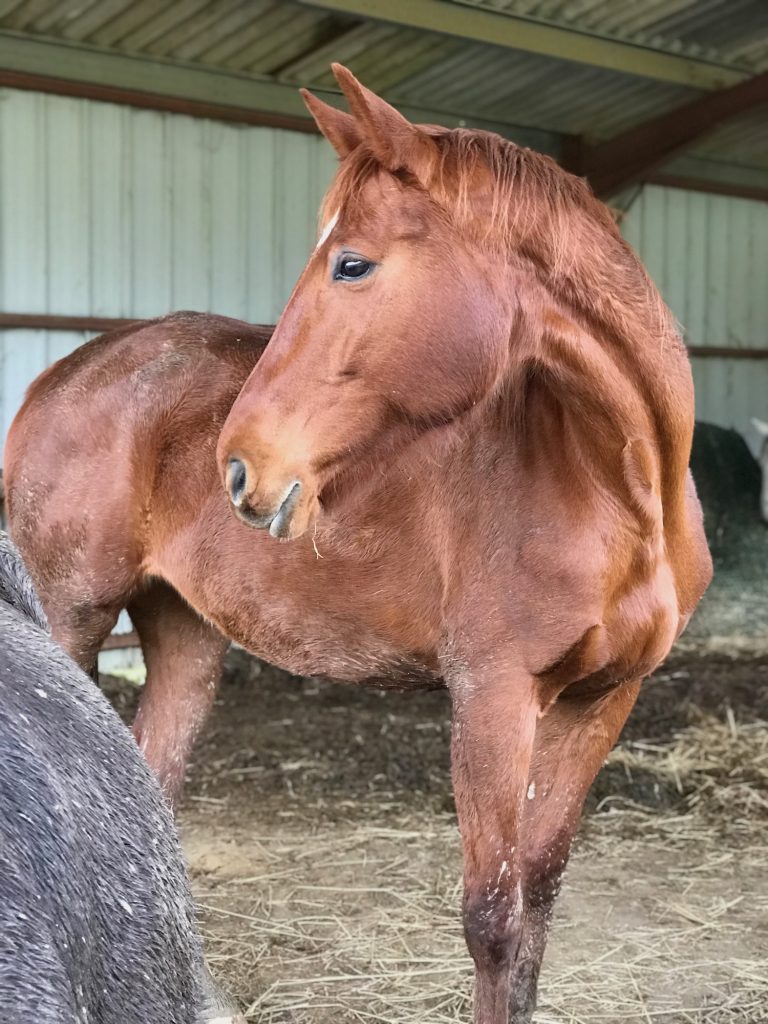
Mirroring Ourselves
Horses, and everything about their lives, is a perfect mirror. And we have the freedom to look into it or not. If we are experiencing a lot of issues and heartaches with our horses, there is something happening within ourselves. We don’t have to see this as a threat, but rather a miraculous opportunity. Imagine if everything outside could come into alignment because you let go of fear and listen to the steady wisdom of your heart.
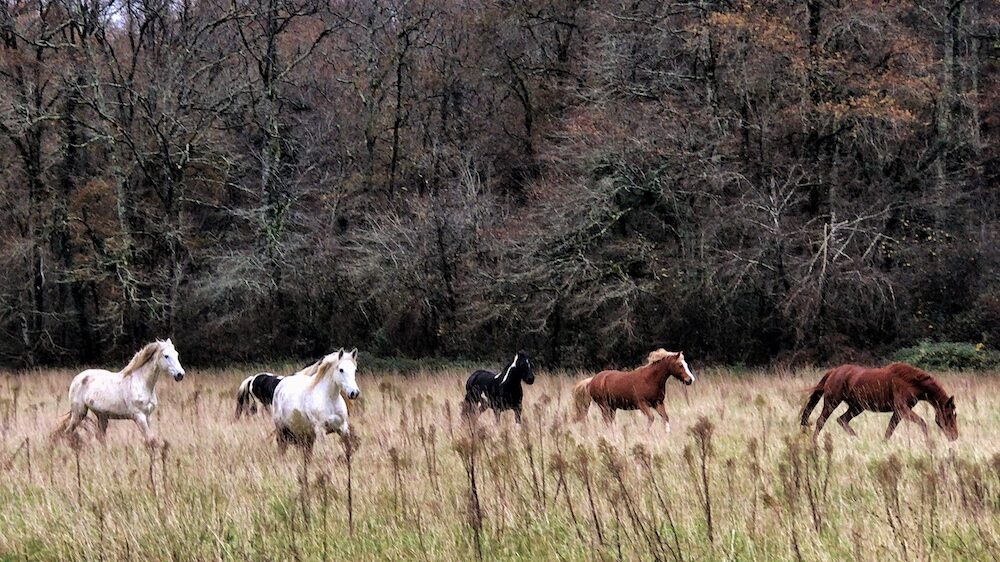
When I stand amongst my healthy, happy herd, it feels good to see how balanced we are. We didn’t get to this point by feeling bad about ourselves, or comparing what we do to others. Although every herd experience is new and we are nowhere near the end of our journey together, we have found a mutual balance that continues to strengthen. This balance is the natural state of being alive.
It doesn’t have to be complicated to reinstate balance with your horses. Take your time, breathe, close your eyes and feel the peace that is already there. If your horse is stressed, you can re-centre together. Allow the fears that need to be released to arise and feel them until they have been heard. This is the way to create a space for inspired actions about your circumstances and management practices.
Taking Responsibility
Caring for animals can become a practice in letting go of our own issues. Sometimes our love for animals is tainted by fear, in this case that they will be injured or exposed to the elements. Yet fear-based thoughts come from the ego and not from wisdom. It is okay to explore a little within to understand our motivations.
Even the smallest attempt we make to open up and receive our truth is generously rewarded by the Universe. The right next step will appear as soon as the truer state of being. Follow what feels good, inspiring and comfortable. Every process needs time to unfold, when guided by the inner state of awareness. There is spark of knowing, maybe familiarity or excitement when you are on the right path.
Our only responsibility is to allow that inner state of awareness to reveal the next best step. Whether that is to go rug free or not.
Conclusion about Going Rug Free
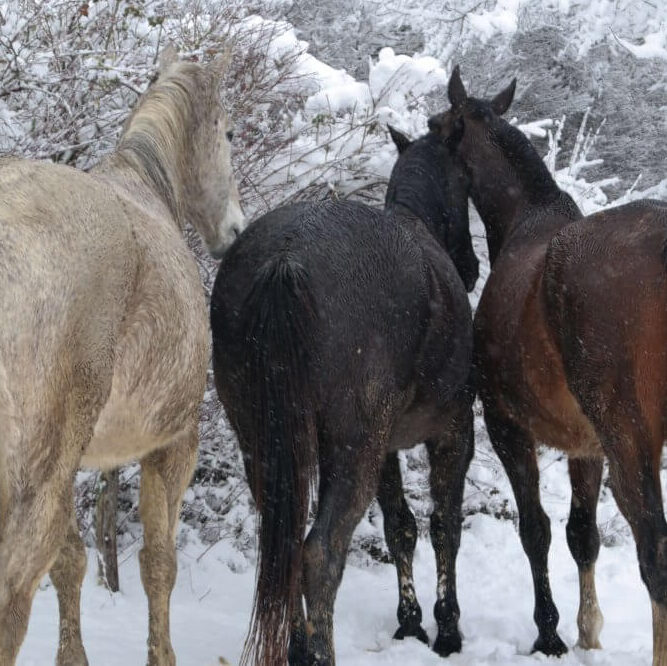
Using rugs, stabling, clipping and over-grooming all prevent horses from using their own highly efficient thermo-regulation system.
Their coats, skin and central nervous system are all equipped to help them to maintain heat or dissipate it as necessary. In fact horses find it easier to stay warm than to cool down.
Some ways that horse rugs interfere with a horse’s natural adaptation:
- They influence the natural process of exposure to changing weather which initiates the horse’s coat growth.
- Preventing the hairs rising and trapping air (piloerection) when the horse needs warmth.
- The muscles used for piloerection will become weak and ineffective.
- Overheating from rugs can reduce the horse’s thermoregulation, and cause discomfort.
- Restrictive and badly fitting rugs inhibit the horse from moving and can cause sores.
For more information about letting your horse go rug free , see the articles below.
Caveats to Going Rug Free
Every situation is different, and it is important to be aware of some contraindications. Horses need to be able to move for many reasons. Their lymphatic system, digestive system and effective thermoregulation all rely on exercise. This is why it is important to make sure stabled horses are managing as they can’t go for a gallop to warm up.
Another consideration is the nature of your horse’s shelter. Is it available to every horse? Do they feel comfortable using the shelter? Is there natural shelter? In the wild horses can look for their own shelter, and horses are expert at finding the wind free spot. Access to high fibre forage at all times is essential for horses to stay warm in inclement weather. Old or unwell horses may have metabolic deficiencies and appreciate extra support in different ways, including well fitted rugs.
It is not always a straightforward decision, because horses will become both conditioned to wearing rugs, and physiologically reliant on them. This is why detaching your emotions and anxieties from the issue at hand is so helpful. Another interesting point is that horses are quite intelligent enough to decide for themselves. As soon as any unnatural reliance has been resolved it is quite possible to develop a communication system so you can listen to your horse’s opinion.
